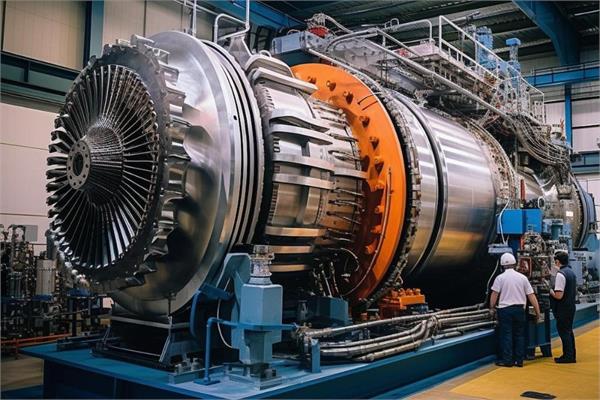
The innovative ceramic materials for metal coatings can potentially increase the efficiency of gas turbine, enabling power plants to produce more electricity and aircraft to consume less fuel.
The researchers at Skoltech have recently identified ideal ceramic materials for metal coatings that would increase the efficiency of gas turbines. They will subject these materials to further experimental tests and, if successful, the coatings will enable power plants to produce more electricity and aircraft to consume less fuel.
In fact, thermal barrier coatings are used to protect turbine blades in power plants and jet engines. The blades are made of nickel-based superalloys, which offer an excellent combination of high temperature resistance, toughness and resistance to degradation. However, when temperatures get high, the superalloy softens and can even melt. Therefore, protective coatings allow turbines to operate at higher temperatures without compromising their integrity and increasing efficiency.
“Thermal barrier coatings are nowadays made of yttria-stabilized zirconia, but if a material with better properties were used instead, that would allow you to get more useful power out of the turbine. To find such materials, you first have to come up with candidates whose properties you predict computationally. We have tested a range of methods and determined the best of them for calculating the relevant material properties, particularly thermal conductivity. In the paper, we list some promising candidates, and we’ll keep on looking,” has stated Artem Oganov, who heads the Material Discovery Laboratory at Skoltech.
Furthermore, a material for thermal barrier coatings must fulfil several requirements:
- Having a very high melting point and a very low thermal conductivity;
- When heated, the material must expand at approximately the same rate as the superalloy, otherwise it will flake off the surface;
- The material must not undergo phase transitions between ambient and turbine operating temperatures, which would cause the coating to crack;
- It must resist the effects of dust particles and oxygen at high temperatures and prevent oxygen ions from reaching the underlying metal and oxidising it.
“While we did calculate the other properties, the crux of the problem is predicting thermal conductivity. We showed such predictions are computationally feasible and reasonably accurate with homogeneous nonequilibrium molecular dynamics simulations. This proves somewhat unexpected, as such simulations involve a massive number of computations and extensive statistics, resulting in high computational complexity. Nevertheless, we managed to simplify the method by supplementing it with machine learning potentials: That is, the interactions between the atoms were predicted using artificial intelligence, rather than being directly calculated,” has added Majid Zeraati, Skoltech PhD student.